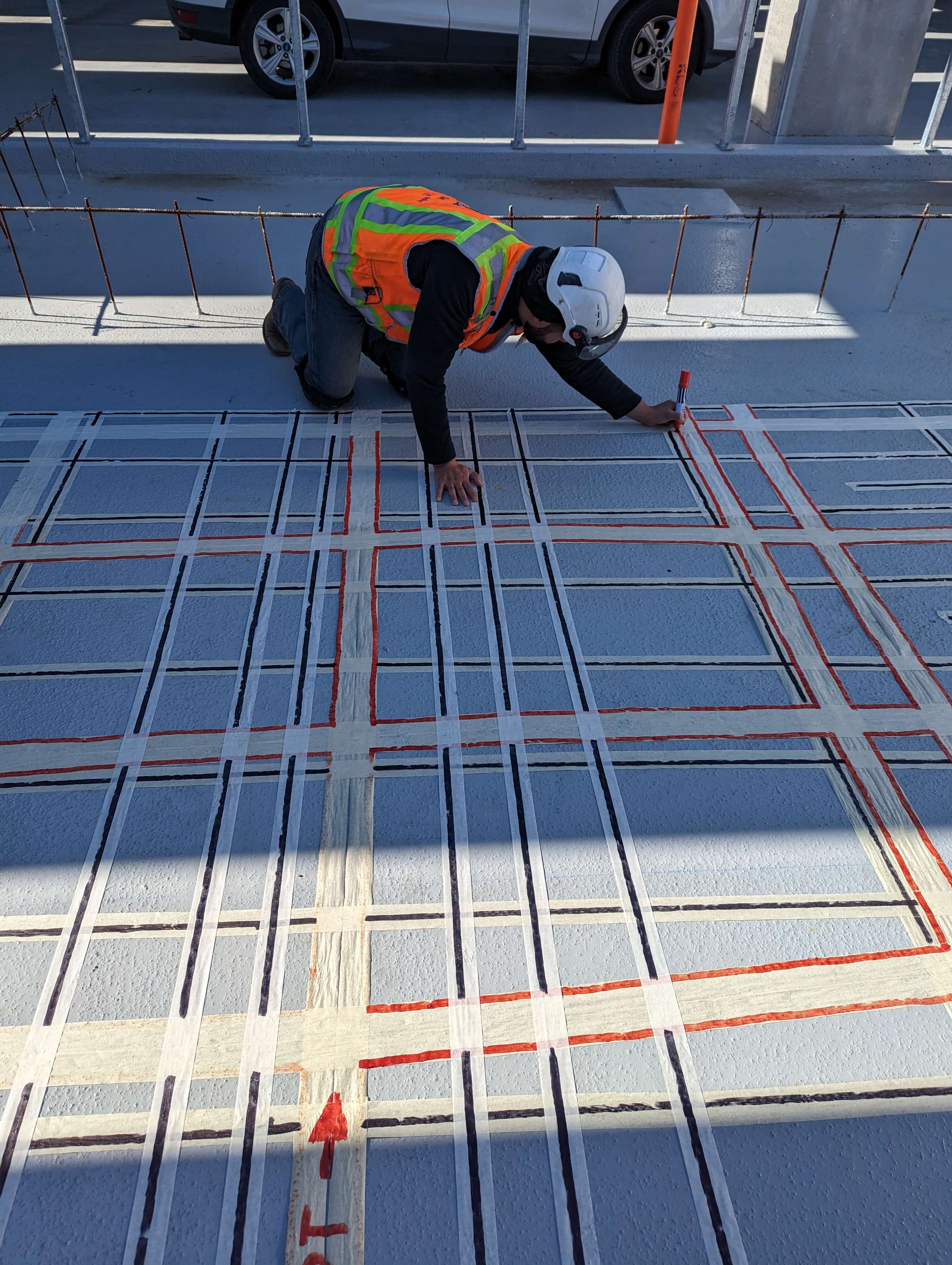Past the Surface: Leveraging Advanced Concrete Scanning Techniques for Unmatched Precision and Insight
Advanced concrete scanning methods have actually arised as important devices in this pursuit, using a glance below the surface to unveil a world of important understandings. By utilizing innovative modern technologies, professionals can discover abnormalities, evaluate the problem of concrete frameworks, and make informed decisions that shape the program of projects.
Relevance of Advanced Concrete Scanning
The importance of using sophisticated concrete scanning strategies depends on the unrivaled precision they provide for spotting sub-surface anomalies and making certain structural honesty. By using innovative technologies such as ground-penetrating radar (GPR), electro-magnetic induction, and progressed finder imaging, building and construction specialists can dive under the surface area of concrete frameworks with a degree of accuracy that far surpasses conventional evaluation methods. Concrete Scanning. These techniques enable the identification of surprise threats like rebar deterioration, gaps, channels, or post-tension cords that might jeopardize the stability and safety of a structure with time
Moreover, progressed concrete scanning gives invaluable insights right into the general problem of a concrete aspect without the need for invasive actions, minimizing the threat of creating damages during the assessment process. The ability to pinpoint the exact location and depth of possible concerns enables targeted repair services and maintenance, inevitably prolonging the life expectancy of the structure and optimizing its efficiency. Essentially, the significance of advanced concrete scanning can not be overemphasized in the realm of building and construction and framework maintenance, where accuracy and dependability are critical.
Sorts Of Cutting-Edge Technologies

Anomalies and Problem Detection

Along with GPR, concrete scanning methods like thermography and impact-echo testing are likewise efficient in identifying anomalies and defects. Thermography utilizes infrared technology visit this site right here to identify variations in surface temperature level, showing possible locations of problem such as delamination or dampness access. On the other hand, impact-echo testing involves evaluating acoustic reactions to spot voids, cracks, and various other issues within the concrete. By leveraging these innovative methods, experts can proactively deal with structural issues, making certain the long life and security of concrete structures.
Assessing Concrete Condition
How can designers accurately review the problem of concrete structures to guarantee their longevity and safety and security? Examining the concrete condition is an important aspect of preserving infrastructure honesty. Different advanced concrete scanning techniques are utilized for this purpose. Ground-penetrating radar (GPR) is generally utilized to assess the inner structure of concrete, detecting gaps, cracks, and various other anomalies that might compromise its toughness. Additionally, impact-echo screening can offer understandings into the thickness and honesty of concrete elements. Ultrasonic pulse speed screening is one more beneficial method for examining concrete top quality by measuring the rate of audio waves through the product.
Integrating non-destructive testing techniques with aesthetic assessments enables for a comprehensive evaluation of concrete condition, making it possible for designers to identify prospective problems early on and implement timely upkeep or repair services. By leveraging these advanced strategies, designers can guarantee the long-lasting durability and security of concrete structures.
Enhancing Decision-Making Processes
In the realm of infrastructure monitoring, maximizing decision-making procedures is crucial see this for ensuring the effective maintenance and durability of concrete frameworks. Improved decision-making processes in concrete monitoring include making use of sophisticated scanning methods to collect comprehensive information on the problem of structures. By leveraging modern technologies such as ground-penetrating radar and 3D imaging, stakeholders can make enlightened decisions pertaining to support, repair work, or substitute approaches.
These progressed scanning methods provide indispensable understandings right into the inner make-up of concrete, identifying possible problems such as voids, splits, or deterioration that may not show up externally. This level of comprehensive info permits proactive maintenance planning, reducing the risk of structural failures and boosting the total life expectancy of concrete structures.
Furthermore, by integrating electronic documentation and evaluation devices right into the decision-making procedure, stakeholders can track the evolution of concrete problems over time, allowing predictive maintenance approaches and optimizing source allocation. Ultimately, the combination of advanced concrete scanning methods enhances decision-making processes by supplying unequaled precision, understanding, and efficiency in facilities management.
Final Thought
In verdict, progressed concrete scanning strategies use unmatched precision and understanding in identifying anomalies, issues, and assessing the problem of concrete structures. By reference leveraging innovative technologies, decision-making processes can be enhanced, bring about even more educated and reliable remedies for preserving and fixing concrete infrastructure. These strategies play a critical function in ensuring the security and long life of concrete frameworks, making them an essential tool in the field of building and construction and engineering.
Furthermore, advanced concrete scanning provides important insights right into the general problem of a concrete element without the need for intrusive steps, lessening the risk of triggering damages throughout the assessment process - Concrete Scanning. An additional innovative modern technology is 3D X-ray scanning, which provides detailed pictures of the interior framework of concrete, providing important info without the need for devastating testing. In Addition, Concrete Cover Meters are made use of to determine the thickness of concrete cover over reinforcement bars precisely. Improved decision-making processes in concrete management include using advanced scanning techniques to collect detailed data on the condition of structures.In verdict, advanced concrete scanning strategies supply unparalleled precision and understanding in discovering abnormalities, flaws, and evaluating the problem of concrete structures
Comments on “Enhance Construction Safety with Expert Concrete Scanning”